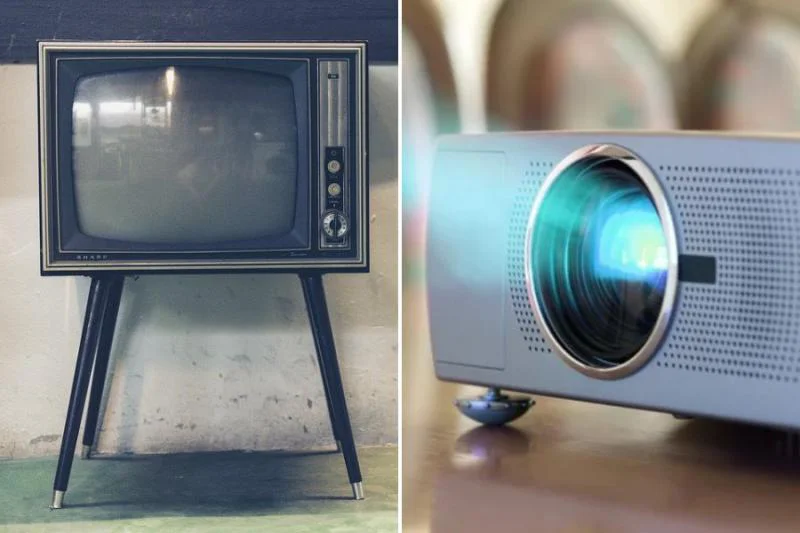The most important difference between a Television and a projector is how they show pictures. A Television has a built-in screen that shines light and shows images directly. A projector, on the other hand, shines the image onto a screen or wall. Television sets have better resolution, brightness, and contrast, which makes them great for small groups and bright rooms. Also, they are easier to set up and use because they don’t need any extra equipment.
On the other hand, projectors have bigger screens and more placement options, which makes them better for larger groups and more immersive viewing experiences. They also make it easier to change the size and shape of the screen. But they need a dark room to work and may not have the same image quality as high-end Television sets.
What is a Television?
A TV, another name for television, is an electronic device that shows things like TV shows, movies, the news, and sports events. It has a screen or display panel, an electronic tuner, and speakers or another way to play sound.
Televisions get signals from cable, satellite, and over-the-air antennas, turning them into pictures and sounds. They come in various sizes, resolutions, and screen types, such as LCD, OLED, and LED.
Over the years, televisions have changed a lot. They used to be big and bulky CRT models, but now they are sleek and thin, with higher resolution and more advanced features like smart TV, voice control, and internet connections.
People of all ages can get entertainment and information from televisions, which are now in almost every home. They are used to playing games, streaming online content, and watching movies, TV shows, sports events, and the news.
What is a Projector?
A projector is an electronic device that shows pictures, videos, and other visual content on a flat surface, like a screen or a wall. It usually has a light source, a lens, and an imaging system that makes the pictures.
Projectors can be different sizes, have different resolutions, and use other technologies like DLP, LCD, and laser. They are used to show visual content to a larger audience in classrooms, meeting rooms, theatres, and home theatres.
The projector works by sending a beam of light through the lens, which magnifies the image and sends it onto the screen or wall. The projector’s resolution, brightness, contrast, and colour accuracy are just some of the things that affect the quality of the image it shows.
Modern projectors often have built-in speakers, smart features, and wireless connectivity, which makes it easy to connect to different devices and stream content. They are a popular alternative to TVs for people who want to watch something bigger and more immersive.
Difference Between Television and Projector
What sets a projector apart from television is how it displays images. In contrast to a projector, whose image is projected onto a screen or wall, a television’s built-in screen emits light and displays images immediately.
One significant distinction between a TV and a projector is the display size. The typical range for televisions is between 24 and 85 inches, while projectors can show images up to 300 inches in size, making them more suitable for big gatherings or home theatres.
Variability in placement is another key distinction. TVs are usually set up on stands or affixed to walls, and their location is frequently constrained by the length of the cables and the accessibility of nearby power outlets. In contrast, projectors offer more placement flexibility because they can be installed on the ceiling or set on a table, hence supporting a wider range of screen sizes and aspect ratios.
Compared to projectors, televisions are more suited for bright spaces and smaller audiences due to their superior resolution, brightness, and contrast. On the other hand, projectors allow for a more cinematic experience due to their greater screen sizes and adaptability to various placement options.
Finally, televisions are easier to set up and use, while projectors need extra equipment like screens and audio systems, which may be costly and take up more room.







